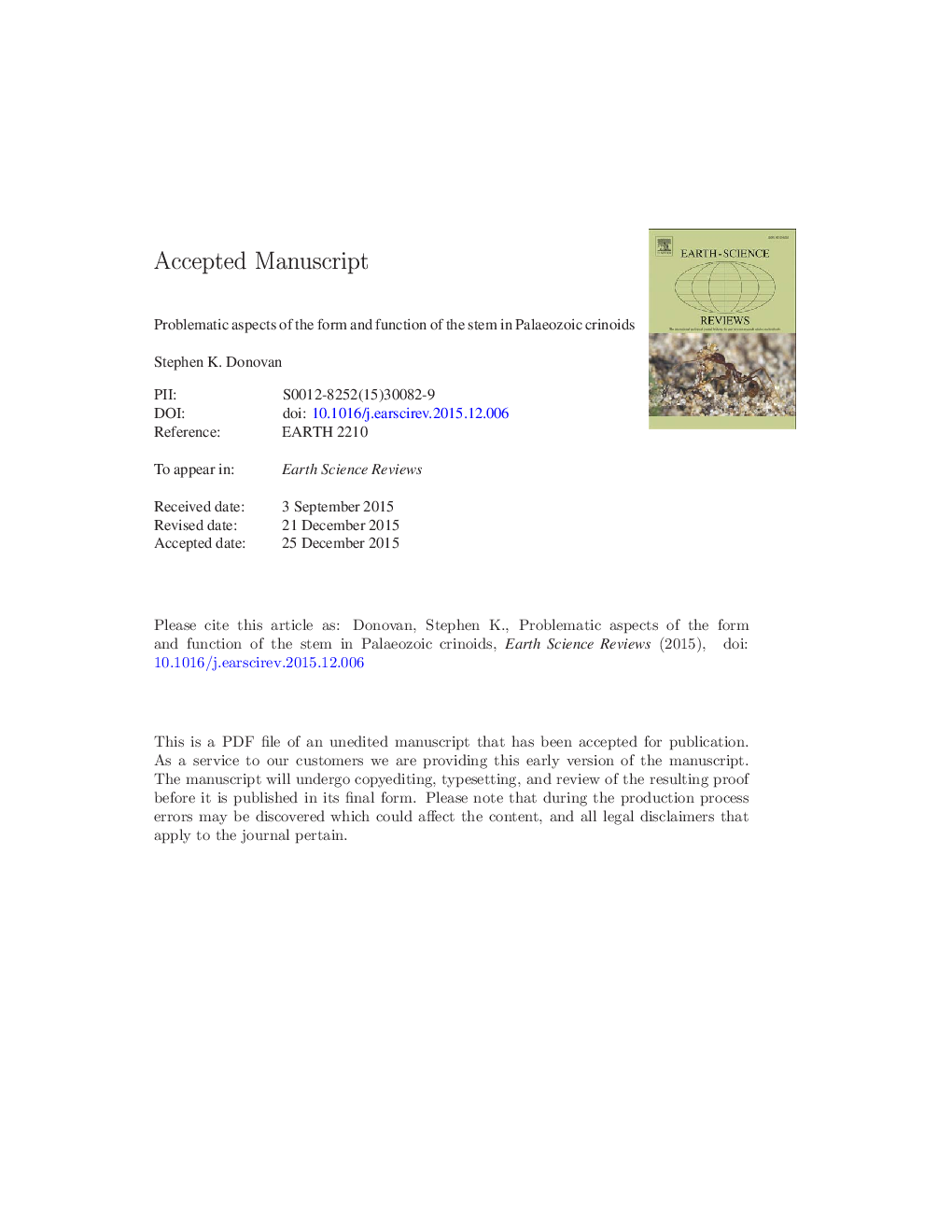| کد مقاله | کد نشریه | سال انتشار | مقاله انگلیسی | نسخه تمام متن |
|---|---|---|---|---|
| 6442979 | 1639948 | 2016 | 37 صفحه PDF | دانلود رایگان |
عنوان انگلیسی مقاله ISI
Problematic aspects of the form and function of the stem in Palaeozoic crinoids
دانلود مقاله + سفارش ترجمه
دانلود مقاله ISI انگلیسی
رایگان برای ایرانیان
کلمات کلیدی
موضوعات مرتبط
مهندسی و علوم پایه
علوم زمین و سیارات
زمین شناسی
پیش نمایش صفحه اول مقاله

چکیده انگلیسی
Although stemmed crinoids are well-known from modern oceans, the post-Palaeozoic Articulata represent a slender 'twig' that survived the demise of the many other clades forming a 'bush' of taxa that failed to survive the end-Permian mass extinction. Thus, although many aspects of form and ecology of extant stemmed crinoids can help explain the functional morphology and niche differentiation of Palaeozoic taxa, there are few close analogues among living members of the group. Most Palaeozoic crinoids have morphological features with no modern counterpart. This is particularly true of the stem - both column and attachment structure - which had a great variation of form, far wider than is recognized from the post-Palaeozoic. Primitive recumbent crinoids typically have a homeomorphic proxistele, which may also have been a feature of upright crinoids with only a weakly rheophilic habit. Primitive columns with broad, circular axial canals may be 'hold overs' from ancestral Hohlwurzeln ('hollow roots'). This broad space may have been filled by perihaemal fluid, but it also may have included other, more 'nutritious' tissues attractive to predators and/or scavengers. Ordovician crinoid columnals had a greater range of symmetries than at any other time during the history of the group; many went extinct during or at the end of the period. Cyclic and pentagonal symmetry in the stems of extant crinoids may be due to the functional requirements of the crown. Attachment structures have a surprisingly poor fossil record, but it may be that some Palaeozoic crinoids were unattached as adults, yet retaining, at least in part, an erect attitude.
ناشر
Database: Elsevier - ScienceDirect (ساینس دایرکت)
Journal: Earth-Science Reviews - Volume 154, March 2016, Pages 174-182
Journal: Earth-Science Reviews - Volume 154, March 2016, Pages 174-182
نویسندگان
Stephen K. Donovan,